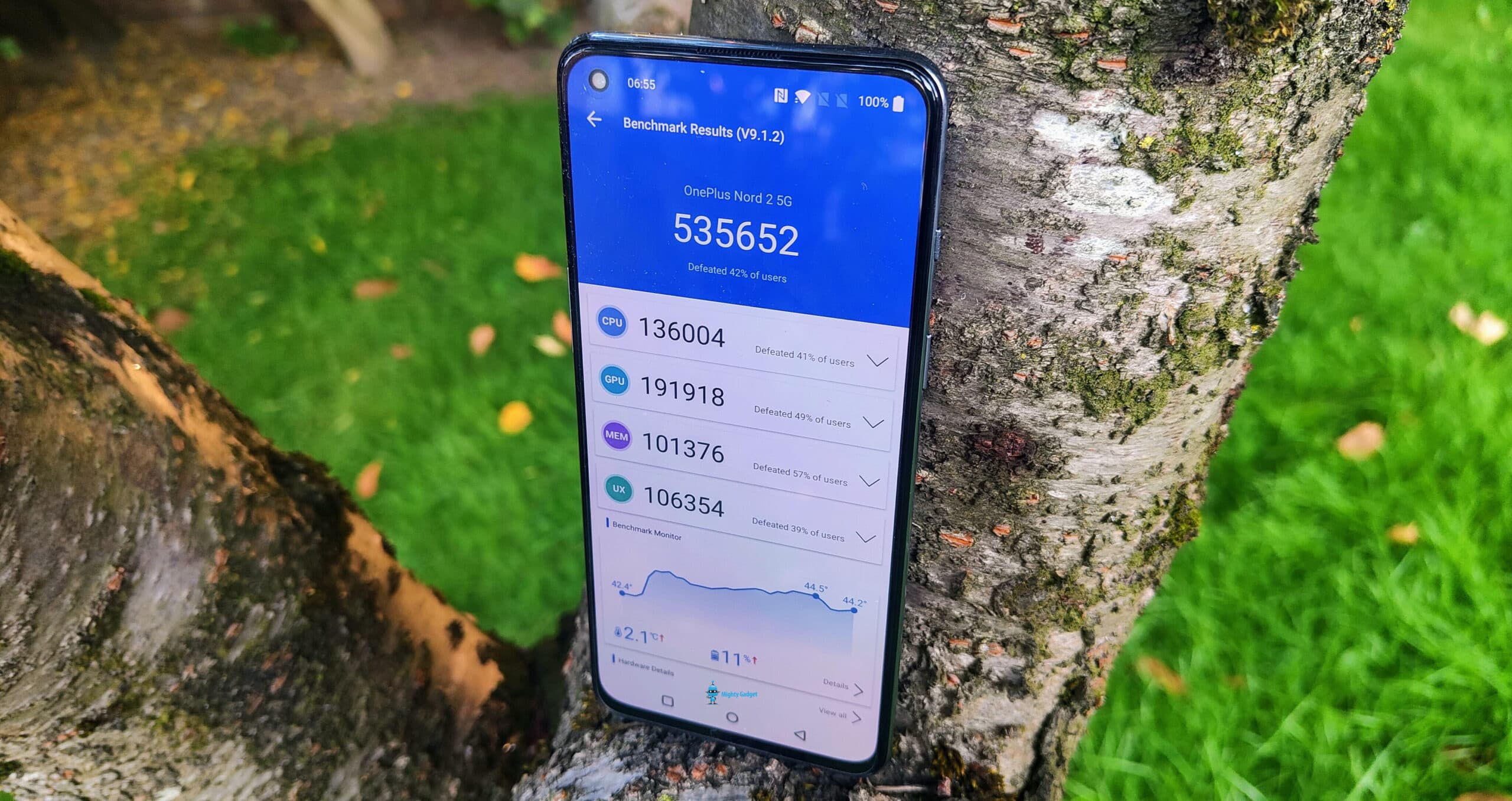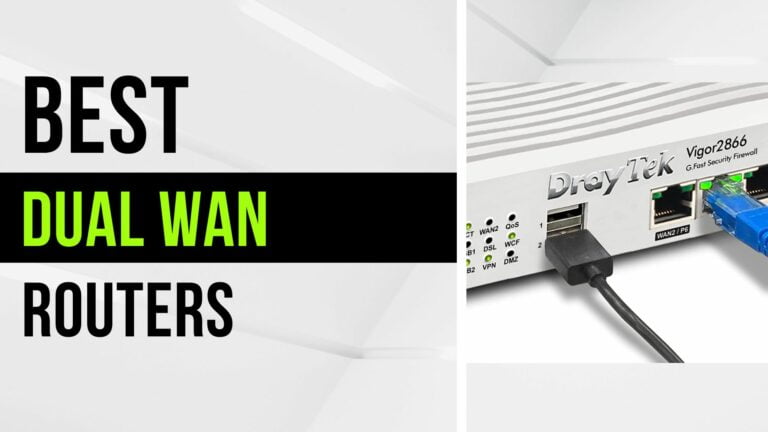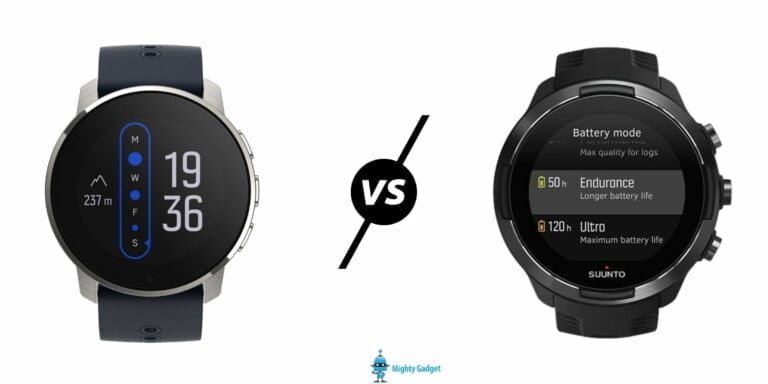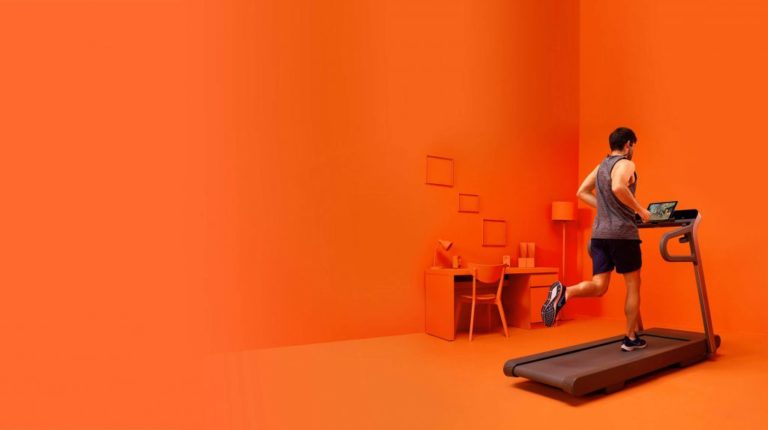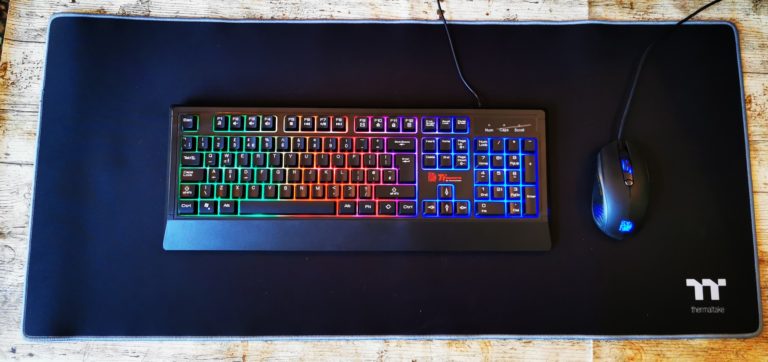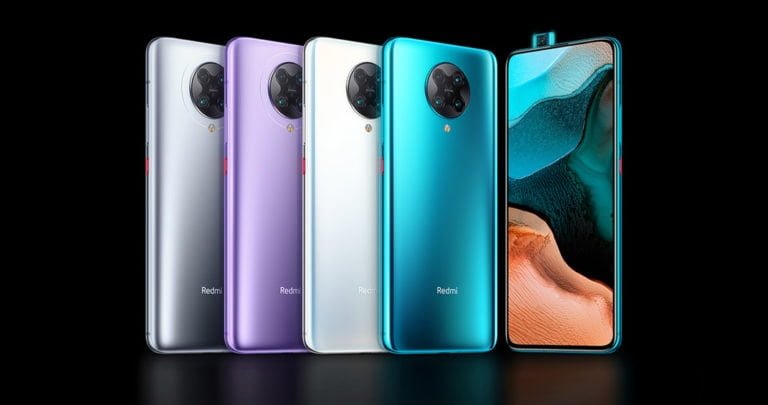Any links to online stores should be assumed to be affiliates. The company or PR agency provides all or most review samples. They have no control over my content, and I provide my honest opinion.
The OnePlus Nord 2 is the first phone to land in the UK using one of MediaTek’s flagship chipsets, the Dimensity 1200.
This is also the first phone that has employed the Open Resource Architecture, allowing device makers to customise a MediaTek SoC to their own specification.
With the Nord 2, this is being branded as MediaTek Dimensity 1200-AI. The smartphone is the first with features like AI Resolution Boost and AI Colour Boost, which aim to improve the display experience, and there’s also improved photo processing speed and image stabilisation capabilities for the AI Photo Enhancement, AI Video Enhancement and Nightscape features.
This year we have also seen Qualcomm take a different path, launched two new Snapdragon 800 series chipsets that offer premium performance at a lower price point. I suspect that this was to counter the threat of MediaTek eroding the Qualcomm market share.
While the Snapdragon 888 is insanely powerful, the battery performance has been disappointing. The combination of these factors has led me to think that these new upper mid-range phones are a much better buy than the flagship counterparts (more so than previous years).
So how does the MediaTek Dimensity 1200-AI compare to its closest competitor, the Snapdragon 870 and the other chipsets that sit around it?
Dimensity 1200-AI vs Snapdragon 870 vs SD768G vs SD888 Specification
| Dimensity 1200 | Snapdragon 870 | Snapdragon 888 | Snapdragon 778G | |
| Fabrication Process | TSMC 6nm | 7nm FinFET | Samsung 5nm | TSMC 6nm |
| CPU | 1 x A78 @ 3.0Ghz 3 x A78 @ 2.6Ghz 4 x A55 @ 2Ghz | 1x Cortex-A77 @ 3.2GHz 3x Cortex-A77 @ 2.4GHz 4x Cortex-A55 @ 1.8GHz | 1xCortex-X1 @ 2.84 GHz 3x Cortex-A78 @ 2.42 GHz 4xCortex-A55 @ 1.8 GHz | 1x Cortex-A78 @ 2.4GHz 3x Cortex-A78 @ 2.2GHz 4x Cortex-A55 @ 1.8GHz |
| GPU | Mali G77 MC9 | Adreno 650 | Qualcomm Adreno 660 | Adreno 642L |
MediaTek Dimensity 1200-AI vs Snapdragon 870 vs SD768G vs SD888 Benchmarks
Antutu V9
- Snapdragon 888: 816887
- Snapdragon 870: 680663
- MediaTek Dimensity 1200-AI: 535652
- Snapdragon 778G: 519947
- Snapdragon 765G: 408739
The MediaTek Dimensity 1200-AI sits at 21% below the SD870 and 3% above the SD860, which is a bit lower than I would have expected based on its specification.
However, it is 31% more powerful than last years Snapdragon 765G used on the original OnePlus Nord.
Geekbench
- Snapdragon 888: 1136/3434
- Snapdragon 870: 985/3143
- MediaTek Dimensity 1200-AI: 826/2599
- Snapdragon 860: 731/2711
- Snapdragon 778G: 789/2930
- Snapdragon 765G: 621/1924
Single-core results are 16% behind the SD870, which perhaps shows there is not a massive difference in CPU performance between the Coretex A77 and A78.
The multi-core results are odd because, looking at the specification, you’d expect the Dimensity to score higher than the SD870.
3DMark WildLife
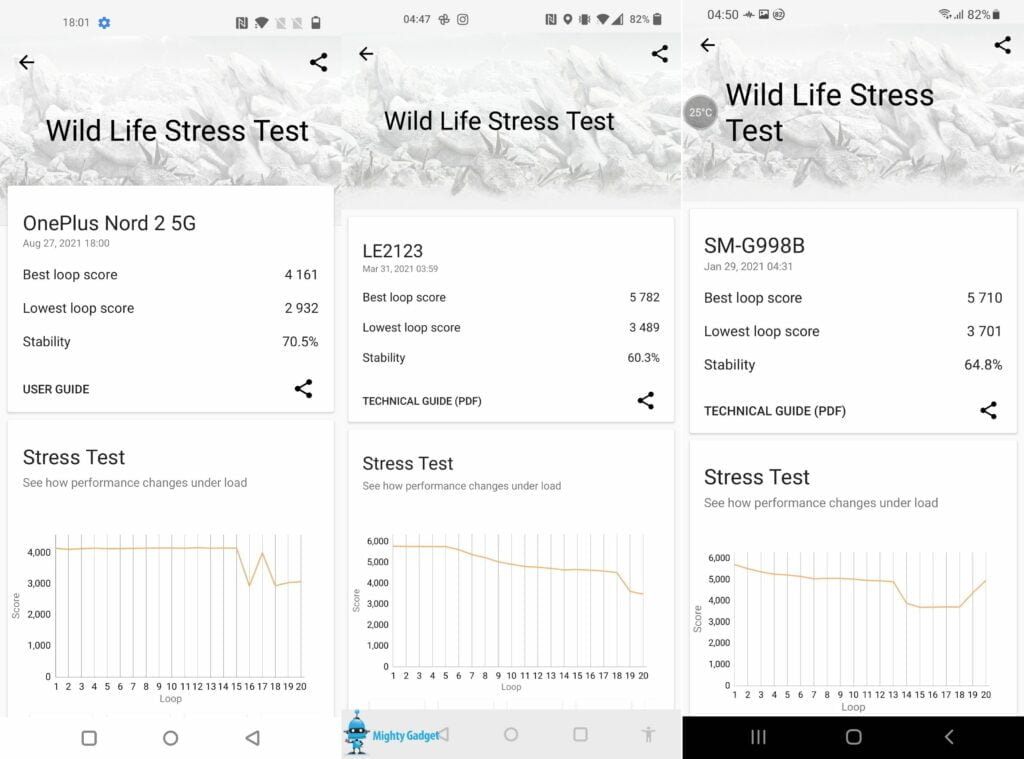
- Snapdragon 888: 5850 High, 3234 Low, 55.3% stability
- Snapdragon 870: 4256 High, 4220 Low, 99.2% stability
- MediaTek Dimensity 1200-AI: 4161 High, 2932 Low, 70.5% stability
- Snapdragon 860: 3428 High, 3405 Low, 99.2% stability
- Snapdragon 778G: 2497 High, 2477 Low, 99.2% stability
- Snapdragon 765G: 1676 High, 1665 Low, 99% stability
The 3DMark Mark results are interesting, perhaps a little disappointing for the OnePlus. We already knew the Snapdragon 888 has poor issues with thermal throttling and, therefore, the stability rating.
While the OnePlus is much more stable than the SD888, it is a long way off the other Qualcomm chipsets.
Looking at the official 3DMark results for phones with the Dimensity 1200, Xiaomi and Poco based devices appear to get good stability scores, while Realme and OnePlus are not so good. So, it looks like this may be a result of the phone design rather than the chipset.
I doubt this would ever be an issue for real-life usage. With the Nord 2, the result stays stable all the way up to loop 15 before a steep drop off for loop 16. This is the phone going at full throttle for 15-minutes, even when gaming it is unlikely everything is going to be running at max for that long. However, it is possible that prolonged gaming sessions may suffer drop off. The phone does get quite hot to touch on the back, so if you do plan to game for long sessions, a cooling solution may be a good idea.
PCMark
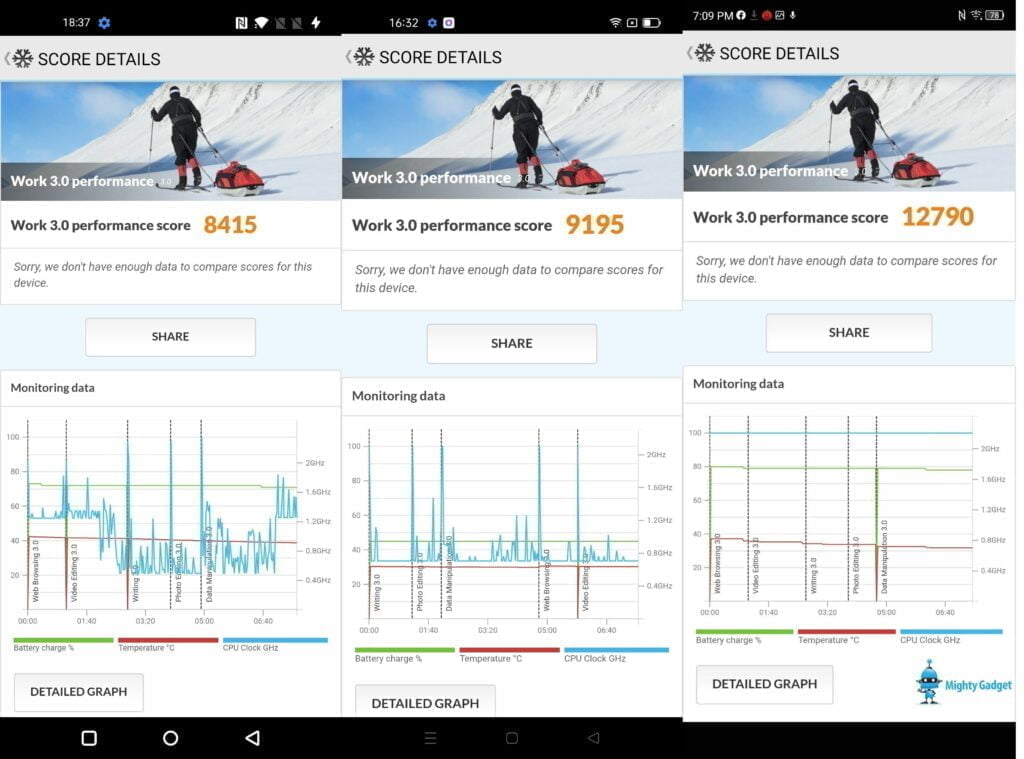
- Snapdragon 888: 12276
- Snapdragon 870: 11762
- Snapdragon 778G: 9195
- Snapdragon 860: 8979
- MediaTek Dimensity 1200-AI: 8415
- Snapdragon 765G: 7757
Benchmarks are inaccurate at the best of times, and PCMark seems to be one of the worst for giving an accurate idea of chipset performance. Results vary wildly and are depending on how a device maker decides to adjust frequencies based on workloads. With my ZTE Axon 30 review, the phone scored a massive result, but looking at the frequencies, it ran at full speed for the full test.
The OnePlus Nord 2 is the polar opposite, it appears to have quite a low-performance score, but if you look at the CPU clock graph it spends the majority of the benchmark well under 1Ghz and only a few brief spikes at full clock speeds.
This is likely a better real-world solution, only dialling up the power when needed and preserving battery life.
PCMark Work 3.0 Battery Life
Battery life performance will vary per phone-based a number of factors, so little point in comparing properly. However, the OnePlus Nord 2 achieves 13h 32mins which is two hours longer than the ZTE Axon 30 and FIVE hours longer than the OnePlus 9 Pro. However, it falls 30 minutes short of the less powerful Realme GT Master.
Overall
The MediaTek Dimensity 1200-AI sits in between the Snapdragon 870 and SD860 in benchmarking performance, offering more than enough power for any usage scenario.
While the Snapdragon 870 does offer better performance and is on phones at a similar price as the OnePlus Nord 2, I wouldn’t say any of them quite compete with the Nord 2. The Poco F3 is cheaper, but the camera can’t compete, the Axon 30 is more expensive but also can’t compete with the camera. The Realme GT Master Explorer costs a little bit more and, in theory, could be a better option, but it is not very clear if or when it will arrive in the UK.
Personally, I can’t tell any difference in the performance of the Nord 2 vs the Axon 30 with the SD870, and I doubt most people could either.
Furthermore, looking at previous years, the Snapdragon 765G used on the original Nord had a significant performance gap between the flagship SD865. Whereas this year, it doesn’t feel like you are sacrificing too much by opting for a more affordable phone using the Dimensity 1200 or SD870.
It will take me a few more days to finish my OnePlus Nord 2 review, but I am leaning towards this being the best phone for around £400 and likely my favourite phone of the year (so far).
I am James, a UK-based tech enthusiast and the Editor and Owner of Mighty Gadget, which I’ve proudly run since 2007. Passionate about all things technology, my expertise spans from computers and networking to mobile, wearables, and smart home devices.
As a fitness fanatic who loves running and cycling, I also have a keen interest in fitness-related technology, and I take every opportunity to cover this niche on my blog. My diverse interests allow me to bring a unique perspective to tech blogging, merging lifestyle, fitness, and the latest tech trends.
In my academic pursuits, I earned a BSc in Information Systems Design from UCLAN, before advancing my learning with a Master’s Degree in Computing. This advanced study also included Cisco CCNA accreditation, further demonstrating my commitment to understanding and staying ahead of the technology curve.
I’m proud to share that Vuelio has consistently ranked Mighty Gadget as one of the top technology blogs in the UK. With my dedication to technology and drive to share my insights, I aim to continue providing my readers with engaging and informative content.

